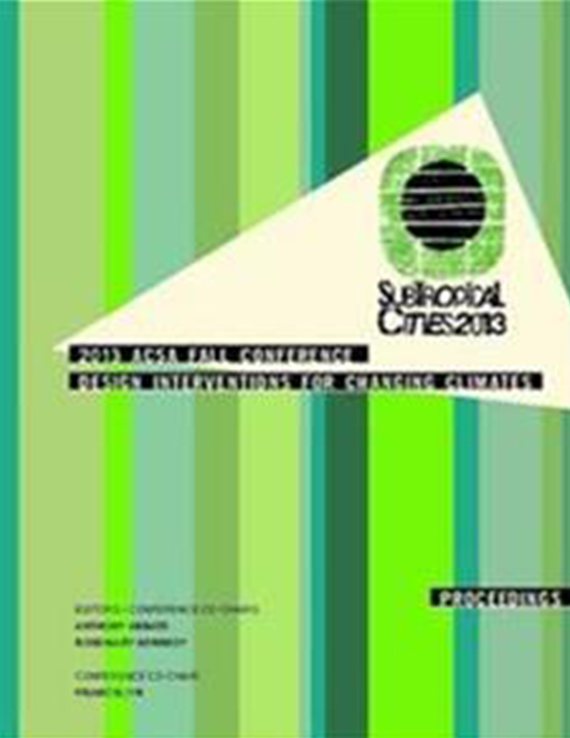Author(s): John McDermott, Mitch Stephanovich & Taner Ozdill
Not everything architecture students do in studio coursework is original research some of it is; and what is, is often overlooked and undervalued. The pedagogy of this course is aimed at adding value to original student research by using technology to visually document aspects of simulated sun and wind interactions with student design proposals for buildings and landscapes; and, to share the outcomes of these documented activities. The ownership of research work through limited publication raises student awareness that the ownership implied in authorship also adds additional value to the activity of extracting information from documented work. A variety of technologies may be used to study environmental phenomenon like sun and wind as critical components to be integrated into designs for buildings and landscapes, this paper focuses on using three. They are: a heliodon, Planar Laser Induced Fluorescence (PLIF) and a cloud based electronic drop box. These technologies support work in two courses.Heliodons are among the oldest technological devices for simulating sun penetration and sun shadow patterns. On the other hand, Planar Laser Induced Fluorescence (PLIF), used as a tool to make the invisible patterns that air makes as it moves in, on and about buildings and landscapes visible, is relatively new. The digital drop box, a business software application, is the newest of the three technologies and has been repurposed by our students as an educational tool for communicating.The drop box was initially envisioned as a one-way course management tool. It has evolved into a student managed forum for inquiry and / or feedback between and among classmates, faculty and the school’s librarian. Regular uploads of images depicting student’s sun and wind simulations to the drop box has become an easy way to subtly encourage critical thinking as a product of peer-to-peer learning. The drop box has facilitated active learning in unexpected ways.Still photos of building and landscape designs displaying seasonal sun penetration, shadow patterns and air movement simulations are snapshots in time. They inadequately represent the dynamic and complex qualities of the sun and wind. On the other hand, recording sun shadow simulations on the heliodon as short full-motion video vignettes of sunrise-to-sunset interactions between proposed designs for buildings and their surroundings with a web cam or with a digital stereo camera, gives students a convenient opportunity to test their design preconceptions against the simulated reality of the recorded image.Some fluids can be energized by lasers to glow-in-the-dark or fluoresce. PLIF is an effective means for making the normally invisible patterns resulting from the interaction of air with buildings and landscape elements, visible. Students in this course use PLIF as an analytical tool to help them see the patterns that result when a model or models representing built or natural forms interacts with a fluorescing moving liquid.Rather than focusing on research methodology, the pedagogy of this course attempts to persuade students to see their documented work as phenomenon in search of an underlying cause.
Volume Editors
Anthony Abbate, Francis Lyn & Rosemary Kennedy
ISBN
978-0-935502-90-9

 Study Architecture
Study Architecture  ProPEL
ProPEL 
